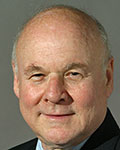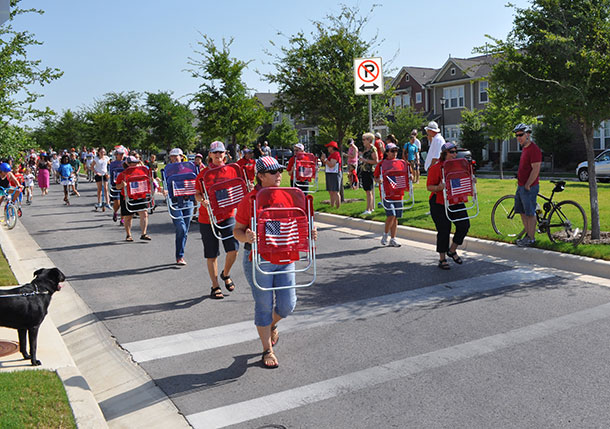Walkable community’s influence on physical activity investigated

George Mann

Lee Chanam

Xuemei Zhu
 Zhipeng Lu
Zhipeng Lu
A research project examining the effect of pedestrian and activity-friendly communities on residents’ health led by Xuemei Zhu, assistant professor of architecture at Texas A&M, is part of a new American Institute of Architects’ initiative to fund projects leading to design solutions addressing challenges in public health and sustainability.
The project will focus on [Mueller] (http://www.muelleraustin.com) , a newly developed, pedestrian/activity-friendly development in Austin built on the site of a vacated municipal airport.
Zhu will be joined in the one-year, $20,000 project by a team of interdisciplinary co-principal investigators including Chanam Lee, associate professor of landscape architecture, Zhipeng Lu, architecture lecturer and George Mann, professor of architecture. Zhu, Lee, Lu and Mann are part of the Design Research for Active Living Team in the [Center for Health Systems & Design] (http://chsd.arch.tamu.edu) at Texas A&M’s College of Architecture.
They will examine if and how living in Mueller increases physical activity and how such an impact can be measured to guide community design and evaluate its outcomes.
Mueller is the first project by the city of Austin to use innovative policies to create a walkable, healthy, sustainable and equitable community.
Planned as a mixed-use area to eventually include 10,000 residents and 10,000 jobs, it features many activity-friendly design characteristics, including mixed land uses and well-connected street networks with high density and rich physical activity resources. It is also a mixed-income community, with more than 25-percent affordable housing units indistinguishably incorporated with market-rate units.
“Research has shown that compact communities with mixed land uses, connected street networks, rich physical activity resources and pedestrian-friendly design can promote health by integrating walking and other physical activity into daily routines,” said Zhu. “An increasing number of communities are using design as a means to promote health, but the actual health impacts of such design interventions are understudied.”
In the first phase of the three-phase study, Zhu and her fellow researchers will develop a toolkit to measure health impacts of physical activity-friendly communities after reviewing existing literature and practice and observing Mueller’s environmental features including its density, street connectivity, visual quality, safety, its physical activity resources such as parks, trails, greenways, sidewalks, sports fields and the location, time, duration, intensity and purpose of its residents’ physical activity.
In phase II, assisted by a $30,000 grant from the [Johns Hopkins University Global Center of Childhood Obesity] (http://www.jhgcco.org) , researchers headed by Zhu will employ the toolkit at Mueller, examining if and how its residents are more physically active after moving there.
“The dual funding sources will allow us to expand the study population from children and youth to residents of all ages and significantly increase the applicability of the study,” said Zhu.
In the study’s final phase Zhu and her fellow researchers will apply the toolkit in the Colony Park community, a walkable and affordable community being developed by the city of Austin, to measure its impact on children and youth physical activities.
Phase III will be conducted in a studio/class project at Texas A&M and the results will be published online, said Zhu.
Additional partners in the project, which will supplement the Center for Health Systems and Design’s [certificate program] (http://chsd.arch.tamu.edu/academics/certificate/) , include the Texas A&M Health Science Center’s [College of Medicine] (http://medicine.tamhsc.edu) , the [International Union of Architects’ Public Health Group] (http://www.uia-public-health-group.org) , and the city of Austin staff, developers and designers engaged in Mueller and Colony Park developments.
Previous post
Next Post
Tags
- academics
- arch gallery
- archone gallery
- building a better texas
- chsd gallery
- coa gallery
- health systems & design
- interdisciplinary
- land development
- landscape architecture & urban planning
- laup gallery
- partnerships
- planning
- research
- rss
- sustainability
- wellness
Related Posts

A&M researchers collaborate in U.S. resilience center

Oct. 23 symposium spotlighted college, faculty research

Hurricane-battered towns get planning help from grad students
Follow Us
Facebook Twitter Vimeo Youtube Flickr RSS
Recent Posts

Planning prof heads study of disaster housing aid

A message from the dean

Former student remembered as expert planner

Leading educator named new head of Architecture Dept.

 Residents of the pedestrian-friendly Mueller community in Austin participate in a Fourth of July parade. Texas A&M researchers are studying the influence of the community's design on the physical
activity of its residents.
Residents of the pedestrian-friendly Mueller community in Austin participate in a Fourth of July parade. Texas A&M researchers are studying the influence of the community's design on the physical
activity of its residents.





_thumbnail_small.png)
